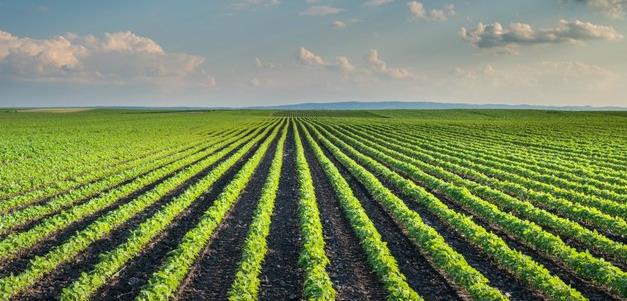Researchers developing ways to deal with potash shortage for row crops
by November 30, 2023 2:37 pm 607 views

There are times when farmers examine their soybean plants. There are situations, however, when the plants look healthy but are suffering from nutrient deficiencies. This is sometimes referred to as “Hidden Hunger.”
A deficiency in potassium, also called potash, can eat into potential profits for soybean producers, said Trent Roberts, professor and the Endowed Chair in Soil Fertility Research for the Arkansas Agricultural Experiment Station. There have been global shortages of potash since Russia invaded Ukraine almost two years ago.
One of Russia’s allies, Belarus produces about 18% of the world’s supply of potash, according to S&P Global. The war has disrupted shipments, which in turn has caused the price to skyrocket.
Limited availability of this fertilizer is a problem for farmers, Roberts said.
“You reduce photosynthetic rate and reduce water use efficiency,” Roberts said. “The overall productivity of the plant really drops. If you have an 80-bushel soybean crop and you’re losing 10% yield, that’s eight bushels of soybean, and you start talking about $14 per bushel, now all of a sudden we’re talking $100 per acre that you’re not able to capture because of this deficiency you don’t know about.”
Roberts and Carrie Ortel, a crop, soil and environmental sciences doctoral student in the Dale Bumpers College of Agricultural, Food and Life Sciences, conducted a study on this issue.
Roberts said one surprising finding wasn’t an objective of the study, which was conducted on five producer-managed commercial production fields around Arkansas.
“One of the biggest things that we found was 90% of these fields were deficient in potash, but they had no visual deficiency symptoms.”
Roberts thinks there’s an opportunity in addressing this nutrient deficiency.
“If we’re able to effectively manage that, then that’s as much as 5 to 15 bushels of soybean per acre across the board that we can increase yields,” he said.
According to the U.S. Department of Agriculture’s National Agricultural Statistics Service, farmers in Arkansas harvested more than 3 million acres of soybeans with an average yield of 52 bushels per acre. It’s the most widely grown crop in the Natural State.
Tissue testing has emerged in recent years as a way to evaluate fields for hidden hunger. Soybean plant material is analyzed in a lab to identify the concentration of potassium in the plant. If plants test below a certain threshold — called the critical concentration — the plants are suffering from nutrient deficiency and will lose yield potential, Roberts said.
“The purpose of this paper was really to define a sampling protocol for tissue tests in soybean,” he said. “So, what we really set out to do was say, ‘OK, how much variability in tissue nutrient concentration exists in our soybean fields?’”
With that information, the team was able to develop a protocol for producers to collect soybean tissue samples, including when, where and how many samples to collect per field.
The next step for the researchers is to develop a set of calibrated potassium fertilizer rates to give producers site-specific recommendations for in-season applications.
“A producer can go out and sample their field and identify whether or not their potassium is adequate. And then based on that tissue concentration, if it’s deficient, we can basically take the tissue concentration and provide a calibrated fertilizer rate,” Roberts said. “The real exciting part is this idea that now we know how to sample, now we know how to interpret it, we can take that tissue concentration and give you a site specific in-season potassium fertilizer rate.”
The researchers hope to develop a decision support tool for producers to use by 2025.
Roberts emphasized that taking the guesswork out of production systems is the goal.
“Whether it’s soybean or any of our other crops, we’ve got a lot of tools out there,” he said. “Whether it’s soil sampling, tissue sampling, there are ways that you can help manage your production system to make sure that yield isn’t being limited and that you’re not spending money you don’t have to.”
